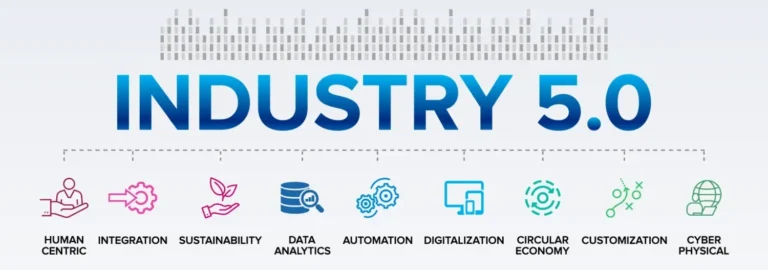How Business Process Improvement (BPI) Maximizes Efficiency in Retail
Business Process Improvement (BPI) goes beyond simply maintaining the status quo. While its name suggests some fine-tuning, BPI focuses on optimizing business processes to ensure they remain relevant and continue to deliver customer satisfaction. This guarantees an organization’s survival and unlocks opportunities for growth and success in a competitive environment. The dynamics of retail are ever-evolving with market trends and needs. To maximize efficiency and make customers happy, organizations must embrace a more BPI-centered strategy.
What is Business Process Improvement?
Business Process Improvement, or BPI, involves implementing practical measures or steps to increase an organization’s operational efficiency.
Imagine your business is like a machine with many moving parts. BPI means checking and fixing parts to make the machine run better and faster.
Here are the most important aspects of Business Process Improvement that will help you understand its requirements more clearly:
- Goal Alignment: BPI helps companies align their goals (short-term and long-term) with market demands and internal capabilities. A company’s goal can range from customer acquisition and customer retention to enhancing brand image and boosting revenue. Based on the targeted goal, BPI helps to improve processes that can bring the company closer to its goals in a short period.
- Continuous Improvement: BPI is not a one-time process. Any company, irrespective of its scale and size, always has scope for improvement. It’s like an ongoing cycle. The processes need to be efficient and goal-oriented, continuously improved upon, and examined whether the improvements bear fruitful results. If not, the masterminds brainstorm new strategies and ideas for further improvement.
- Finding Weak Spots: A major aspect of BPI involves taking a close look at operational workflows and improving existing processes. It’s like checking a machine’s parts regularly to make sure it works well all the time. The workflow involves assigning, supervising, maintaining tasks, and enhancing them with new strategies. By examining these workflows, one can identify bottlenecks and inefficiencies. The examination process usually involves steps like process mapping, data analysis, and employee feedback.
- Making Changes: Once problems or issues in a workflow are identified successfully, BPI techniques help fix them and thereby increase productivity. This might involve streamlining the workflow itself. BPI can improve how tasks are done by removing extra steps or combining similar activities to make things run smoother. BPI can help redesign the sequence of tasks, eliminating unnecessary steps or consolidating similar activities to create a more efficient flow. Additionally, BPI may recommend technological upgrades. This could include introducing new software, automation tools, or communication platforms specifically designed to boost efficiency and address the identified problems. Finally, BPI emphasizes the importance of a skilled workforce. It can recommend assigning the right people with the right skills to specific tasks or suggesting providing additional training to bridge any skill gaps identified during the analysis.
- Measuring Success: BPI is about checking if the changes made actually improved things. It’s like checking the machine again after a tune-up to see if it’s running faster. BPI involves tracking key metrics like turnaround time (TAT) or processing time, error rates, employee and customer satisfaction levels, and adherence to established guidelines.
How BPI Can Help Retail Companies Maximize Efficiency?
The retail landscape constantly shifts with emerging technologies, rising customer expectations, and unexpected challenges that disrupt established businesses. While this presents a significant challenge, retailers can leverage BPI best practices to become more agile and efficient, ultimately thriving in this dynamic environment.
But before applying BPI to a process, it’s important to understand the typical goals of a retailer in your industry. In simpler terms, what does a retailer or a person owning a retail business usually want for their business?
For starters..
- Keeping Up with Evolving Customers: Shoppers are savvier than ever, expecting seamless omnichannel experiences (blending online and in-store shopping), personalized service, and competitive prices. Note: Traditional retail models might struggle to meet these ever-changing demands. This is where BPI can help!
- Optimizing Operations in a Competitive Landscape: Balancing costs with efficiency and offering a smooth customer experience can be tricky. Rising labor costs, supply chain disruptions, and the need to integrate online and physical operations all create a lot of pressure on retailers.
Building on what we discussed, Business Process Improvement (BPI) is a structured approach to identifying and resolving business challenges. It involves meticulously planned steps to address both new and recurring problems, ensuring long-term success. Retailers, especially, face a constant need to adapt and innovate. BPI empowers them to streamline operations and stay relevant in a competitive landscape.
Here, we explore some essential BPI “must-dos” for retailers to ensure profitability and business longevity.
- Regularly analyze customer data to understand buying trends and identify areas for improvement in product selection, pricing, and promotions.
By leveraging customer data analytics, retailers can gain valuable insights into customer behavior, buying preferences, and product popularity. This data can then be used to make strategic decisions about product selection, pricing strategies, and targeted promotions that resonate with specific customer segments.
- Streamline inventory management processes to reduce stockouts and optimize ordering.
Inefficient inventory management can lead to stockouts, lost sales, and unnecessary storage costs. BPI helps retailers streamline their inventory management processes by implementing practices such as forecasting demand, optimizing ordering quantities, and automating inventory control systems.
- Implement efficient supply chain management to ensure timely delivery of goods and minimize transportation costs.
A well-optimized supply chain is essential for ensuring timely delivery of goods to stores and customers. BPI can help retailers identify inefficiencies in their supply chains, such as slow delivery times or excessive transportation costs. By implementing strategies like collaborating with suppliers, planning delivery routes, and leveraging technology for real-time tracking, retailers can streamline their supply chains and reduce overall costs.
- Enhance the customer experience by improving in-store operations and online ordering systems.
In today’s competitive retail landscape, providing a positive customer experience is critical for business success. BPI can help retailers identify areas for improvement in their in-store operations, such as checkout times, store layout, and staff training. Additionally, BPI can be applied to optimize online ordering systems, ensuring a seamless and user-friendly experience for online shoppers.
- Utilize data analytics to personalize marketing campaigns and target the right audience with relevant promotions.
Data analytics plays a vital role in personalizing marketing campaigns and reaching the right target audience. By analyzing customer data, retailers can gain insights into individual customer preferences and tailor their marketing messages accordingly. This data-driven approach ensures that promotions are relevant to specific customer segments, leading to higher engagement and conversion rates.
- Invest in employee training and development programs to improve staff efficiency and customer service skills.
A well-trained and motivated workforce is essential for any retail business. BPI emphasizes the importance of investing in employee training and development programs. By providing employees with the necessary skills and knowledge, retailers can improve staff efficiency, enhance customer service interactions, and create a more positive work environment.
By implementing all of these BPI steps, retailers can become more agile, efficient, and customer-centric. As a result, they will have a competitive edge in this ever-evolving market.
Benefits of Implementing BPI in Retail
- Streamlined Processes: Business Process Improvement (BPI) can identify and eliminate inefficiencies in areas like inventory management, order fulfillment, and staffing. This helps businesses of all sizes run smoother, reduce costs, and serve their customers as per their preferences.
- Enhanced Customer Experience: BPI can assist stores in enhancing customer experience by observing how customers engage with the store. This can involve making interactions more personalized, quicker, and convenient.
- Staying Updated: BPI helps retailers stay relevant by staying updated. They use data to assess processes and adjust to new technologies, customer preferences, and market conditions.
By implementing Business Process Improvement (BPI), retailers can achieve a trifecta of benefits: streamlined operations leading to cost savings and improved customer service, enhanced customer experiences through personalization and convenience, and continuous adaptation to the evolving market through data-driven decision-making. Done right, BPI empowers retailers to thrive in today’s competitive business landscape.







